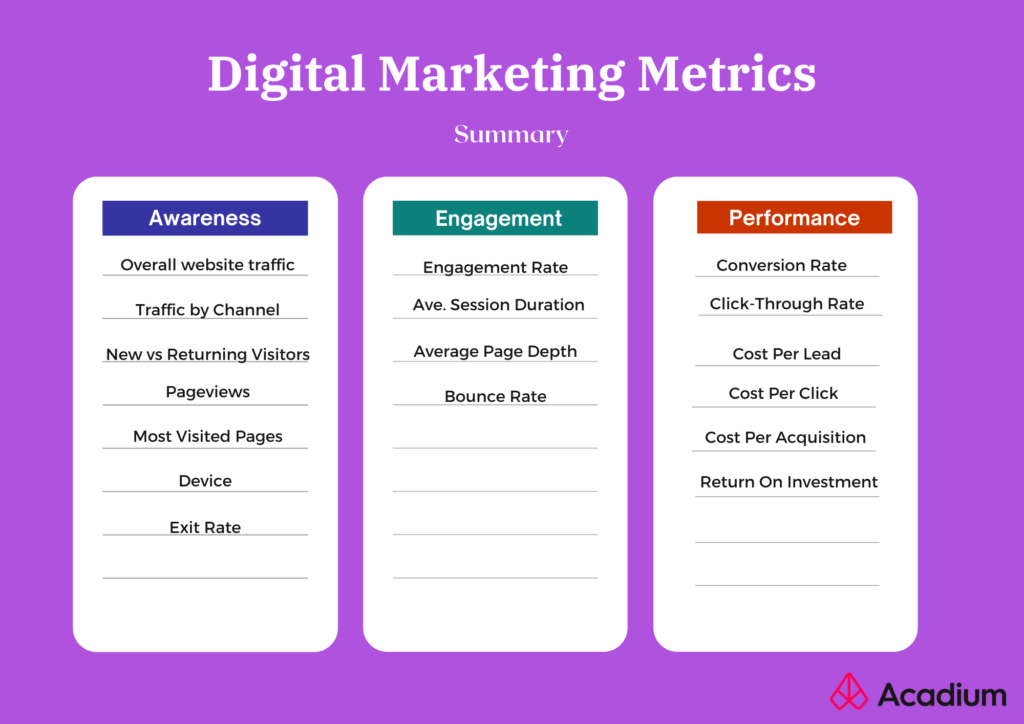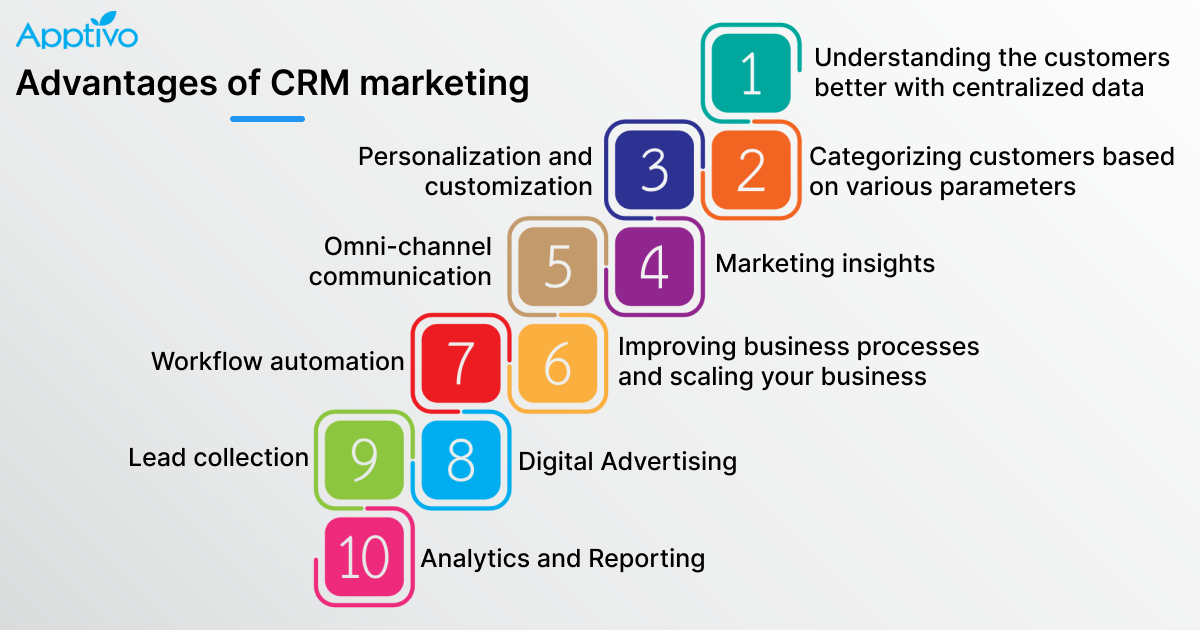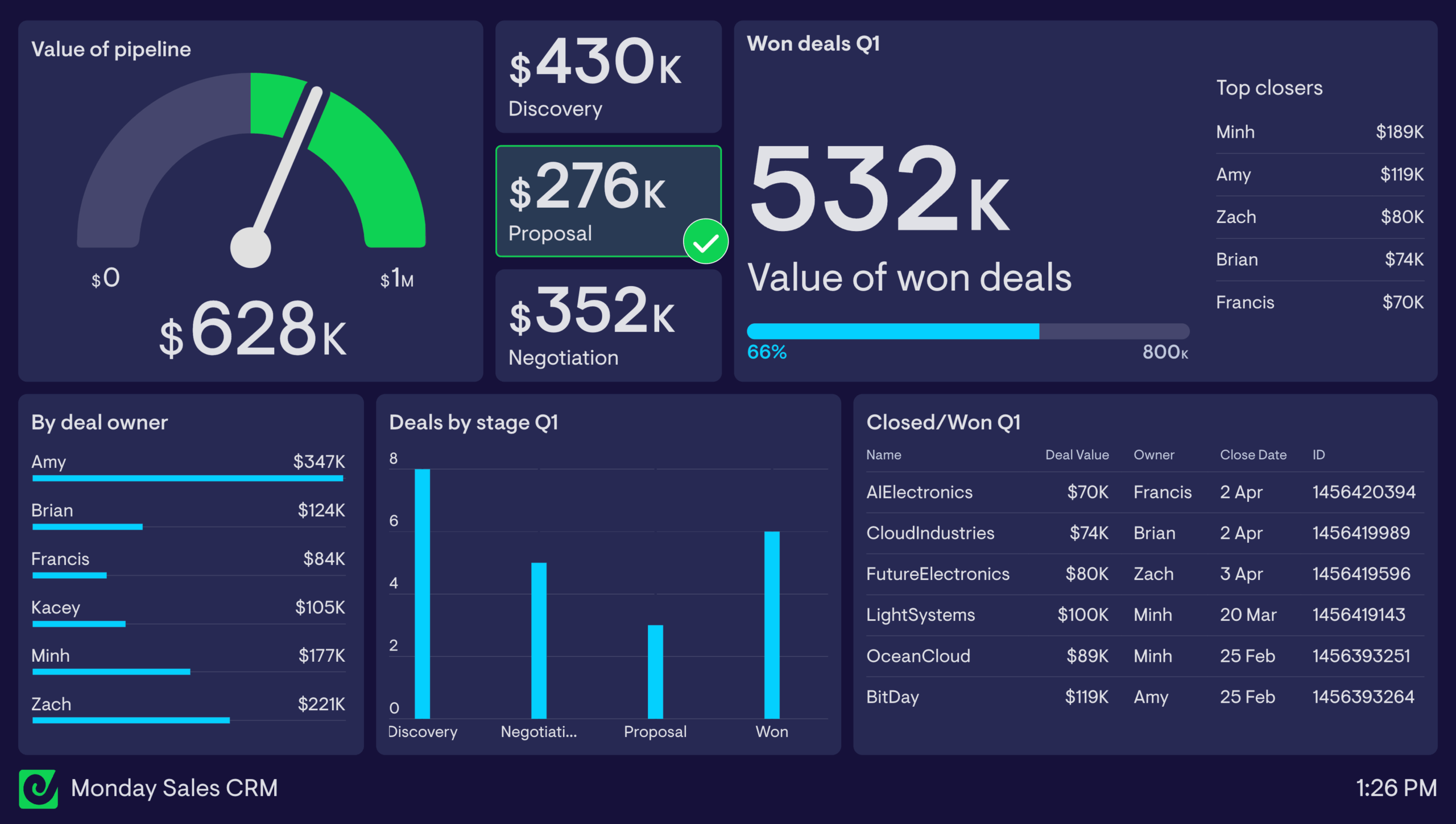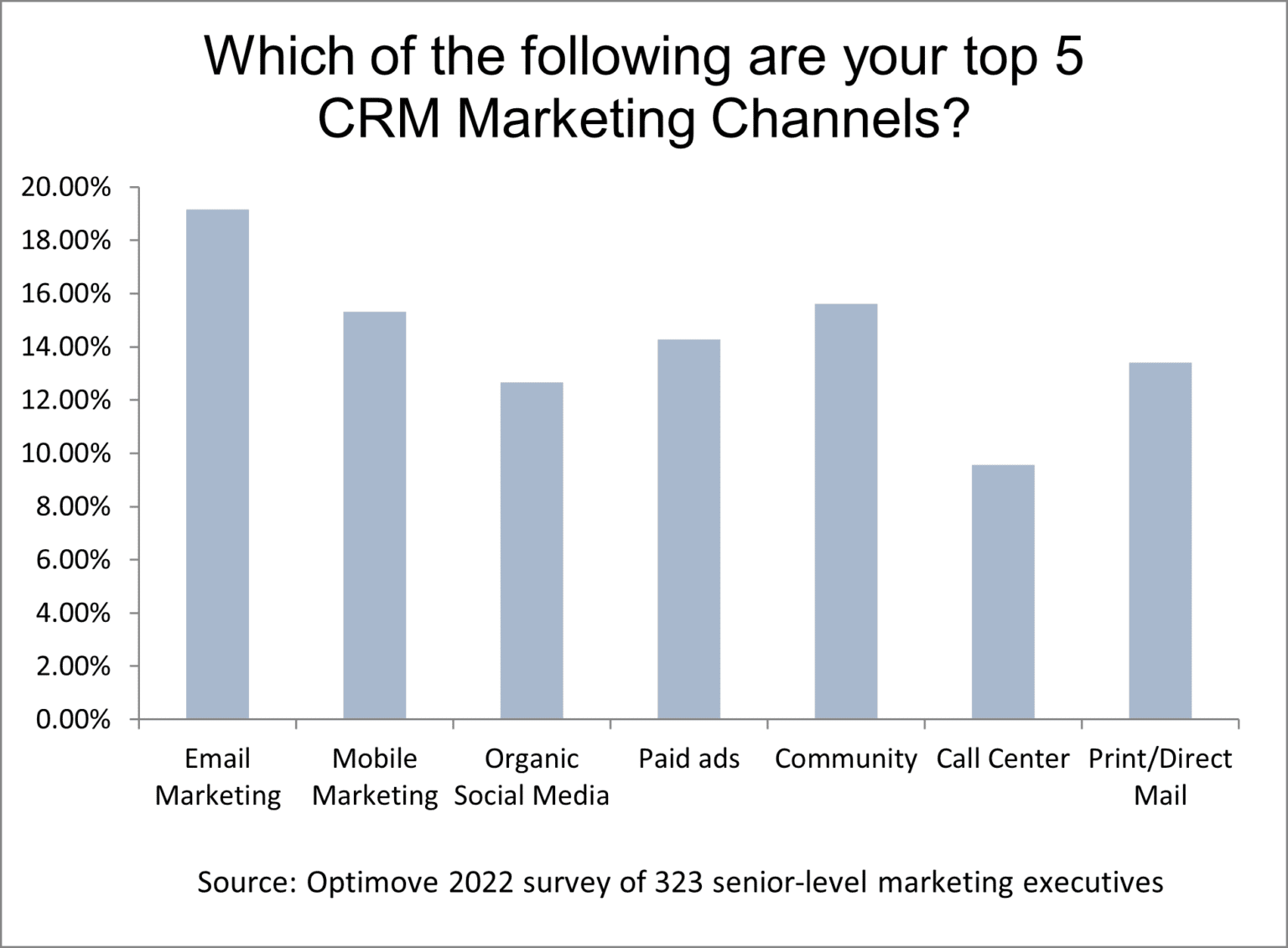
Decoding CRM Marketing Metrics: A Comprehensive Guide to Measuring Success
In the ever-evolving landscape of digital marketing, Customer Relationship Management (CRM) has emerged as a cornerstone for businesses aiming to cultivate lasting customer relationships and drive sustainable growth. However, simply implementing a CRM system isn’t enough. To truly harness the power of CRM, you need to understand and meticulously track specific marketing metrics. These metrics act as your compass, guiding you toward informed decisions and allowing you to measure the effectiveness of your CRM strategies. This comprehensive guide delves deep into the world of CRM marketing metrics, equipping you with the knowledge and tools you need to measure success and optimize your marketing efforts.
Why CRM Marketing Metrics Matter
Think of CRM marketing metrics as the vital signs of your marketing health. They provide invaluable insights into how your marketing initiatives are performing, allowing you to identify what’s working, what’s not, and where improvements can be made. Without these metrics, you’re essentially operating in the dark, making decisions based on guesswork rather than data-driven insights. Here’s why CRM marketing metrics are crucial:
- Measure Campaign Effectiveness: Metrics enable you to assess the performance of your marketing campaigns, helping you understand which campaigns are generating the most leads, conversions, and revenue.
- Optimize Marketing Spend: By tracking key metrics, you can identify areas where you can optimize your marketing spend, ensuring you’re allocating resources to the most effective channels and strategies.
- Improve Customer Experience: CRM metrics offer insights into customer behavior, preferences, and pain points, allowing you to personalize your marketing efforts and enhance the overall customer experience.
- Increase Sales & Revenue: By identifying and addressing bottlenecks in your sales funnel, CRM metrics can help you increase sales and ultimately drive revenue growth.
- Enhance Customer Loyalty: Understanding customer engagement and satisfaction through metrics enables you to build stronger customer relationships and foster long-term loyalty.
Key CRM Marketing Metrics to Track
The world of CRM marketing metrics is vast, but focusing on the right ones is crucial. Here are some of the most important metrics to track, categorized for clarity:
1. Lead Generation Metrics
These metrics focus on the effectiveness of your lead generation efforts, helping you understand how well you’re attracting and capturing potential customers.
- Website Traffic: The total number of visitors to your website. While not strictly a CRM metric, it’s a critical indicator of the effectiveness of your overall marketing efforts. Track traffic sources (organic search, social media, paid advertising, etc.) to understand where your leads are coming from.
- Lead Volume: The total number of leads generated within a specific period. This is a fundamental metric for understanding the overall effectiveness of your lead generation activities.
- Conversion Rate (Website to Lead): The percentage of website visitors who convert into leads (e.g., by filling out a form, downloading a resource). This indicates the effectiveness of your website’s lead capture mechanisms.
- Cost Per Lead (CPL): The average cost incurred to generate a single lead. This metric helps you assess the efficiency of your lead generation campaigns. Calculate it by dividing your total lead generation costs by the number of leads generated.
- Lead Source Performance: Analyze which sources (e.g., organic search, paid advertising, social media, email marketing) are generating the most leads. This helps you optimize your lead generation efforts by focusing on the most effective channels.
2. Sales Funnel Metrics
These metrics provide insights into the performance of your sales funnel, from lead qualification to deal closure.
- Lead Qualification Rate: The percentage of leads that meet your pre-defined criteria for qualification (e.g., budget, authority, need, timeline). This helps you identify which leads are most likely to convert into customers.
- Opportunity Creation Rate: The percentage of qualified leads that are converted into sales opportunities. This indicates the effectiveness of your lead nurturing efforts.
- Conversion Rate (Opportunity to Deal): The percentage of sales opportunities that are successfully closed and converted into paying customers. This is a critical metric for measuring the overall success of your sales process.
- Sales Cycle Length: The average time it takes for a lead to move through your sales funnel and become a customer. A shorter sales cycle generally indicates a more efficient sales process.
- Win Rate: The percentage of deals that are won out of the total number of opportunities. This indicates the effectiveness of your sales team and the competitiveness of your offerings.
- Average Deal Size: The average revenue generated per closed deal. This metric helps you understand the value of your customers and identify opportunities to increase deal sizes.
3. Customer Engagement Metrics
These metrics measure the level of engagement and interaction customers have with your brand.
- Customer Lifetime Value (CLTV): The predicted revenue a customer will generate throughout their relationship with your business. This is a crucial metric for understanding the long-term value of your customers and making informed decisions about customer acquisition and retention strategies.
- Customer Acquisition Cost (CAC): The average cost incurred to acquire a new customer. This metric helps you assess the efficiency of your customer acquisition efforts.
- Customer Retention Rate: The percentage of customers who remain customers over a specific period. This is a critical indicator of customer loyalty and the effectiveness of your customer retention strategies.
- Churn Rate: The percentage of customers who stop doing business with your company over a specific period. A high churn rate indicates issues with customer satisfaction or product/service quality.
- Customer Satisfaction Score (CSAT): A metric that measures customer satisfaction with your products, services, or support. This is typically measured through surveys or feedback forms.
- Net Promoter Score (NPS): A metric that measures customer loyalty and willingness to recommend your company to others. This is also typically measured through surveys.
- Customer Engagement Score: A composite score that combines various engagement metrics (e.g., website visits, email opens, social media interactions) to provide a holistic view of customer engagement.
4. Marketing Campaign Metrics
These metrics evaluate the performance of your specific marketing campaigns.
- Click-Through Rate (CTR): The percentage of people who click on a link in your marketing materials (e.g., email, social media post, ad). This indicates the effectiveness of your calls to action and the relevance of your content.
- Open Rate: The percentage of recipients who open your email campaigns. This is a fundamental metric for measuring the effectiveness of your email subject lines and content.
- Conversion Rate (Campaign): The percentage of people who complete a desired action (e.g., purchase, sign-up) after interacting with your campaign.
- Return on Investment (ROI): The profitability of your marketing campaigns. Calculate it by dividing the net profit from a campaign by the cost of the campaign.
- Cost Per Conversion: The average cost incurred to achieve a specific conversion (e.g., sale, lead). This metric helps you assess the efficiency of your campaigns.
How to Track CRM Marketing Metrics Effectively
Tracking CRM marketing metrics effectively requires a strategic approach. Here’s a step-by-step guide:
1. Define Your Goals and Objectives
Before you start tracking metrics, clearly define your marketing goals and objectives. What do you want to achieve with your CRM efforts? Are you aiming to increase leads, boost sales, improve customer retention, or enhance brand awareness? Your goals will determine which metrics are most relevant to track.
2. Choose the Right CRM Software
The right CRM software is essential for tracking and analyzing your marketing metrics. Look for a CRM system that offers robust reporting and analytics capabilities, integrates with your other marketing tools, and provides customizable dashboards to visualize your data. Popular CRM systems include Salesforce, HubSpot, Zoho CRM, and Microsoft Dynamics 365.
3. Set Up Your CRM System
Configure your CRM system to track the metrics that are most important to your business. This may involve creating custom fields, setting up automated workflows, and integrating your CRM with other marketing tools. Ensure that your CRM system is properly configured to capture the data you need.
4. Establish Baselines and Set Benchmarks
Before you start tracking metrics, establish baselines for your key performance indicators (KPIs). This will help you measure your progress over time. Also, research industry benchmarks for your specific industry to understand how your performance compares to your competitors.
5. Collect and Analyze Data Regularly
Consistently collect and analyze your CRM marketing data. Set up a regular reporting schedule (e.g., weekly, monthly, quarterly) to review your progress and identify trends. Use the data to gain insights into your marketing performance, identify areas for improvement, and make data-driven decisions.
6. Create Dashboards and Reports
Create dashboards and reports to visualize your CRM marketing metrics. This will make it easier to track your progress, identify trends, and communicate your findings to stakeholders. Your dashboards should be easy to understand and provide a clear overview of your key performance indicators.
7. Regularly Review and Optimize
Regularly review your CRM marketing metrics and make adjustments to your strategies as needed. Don’t be afraid to experiment with different approaches and test new ideas. Continuously optimize your marketing efforts based on the data you collect.
8. Integrate and Automate
Integrate your CRM with other marketing tools, such as email marketing platforms, social media management tools, and advertising platforms. Automate data collection and reporting whenever possible to save time and improve efficiency.
Tools for Tracking CRM Marketing Metrics
Several tools can help you track and analyze your CRM marketing metrics. Here are a few examples:
- CRM Software: As mentioned earlier, your CRM system is the central hub for tracking many of your key marketing metrics.
- Google Analytics: A powerful web analytics tool that can track website traffic, conversions, and other important website-related metrics.
- Email Marketing Platforms: Platforms like Mailchimp, Constant Contact, and Sendinblue provide detailed analytics on email open rates, click-through rates, and conversion rates.
- Social Media Analytics Tools: Platforms like Hootsuite, Sprout Social, and Buffer offer analytics on social media engagement, reach, and follower growth.
- Marketing Automation Platforms: Platforms like HubSpot, Marketo, and Pardot provide advanced analytics on marketing campaign performance, lead nurturing, and sales pipeline activity.
- Spreadsheet Software: Tools like Microsoft Excel and Google Sheets can be used to create custom reports and dashboards.
Best Practices for Utilizing CRM Marketing Metrics
To get the most out of your CRM marketing metrics, keep these best practices in mind:
- Focus on the Right Metrics: Don’t try to track every metric under the sun. Focus on the metrics that are most relevant to your business goals.
- Track Metrics Consistently: Regularly track your metrics to identify trends and measure your progress.
- Analyze Data Thoroughly: Don’t just collect data; analyze it to gain insights into your marketing performance.
- Take Action Based on Data: Use the insights you gain from your data to make informed decisions and optimize your marketing efforts.
- Communicate Your Findings: Share your findings with your team and stakeholders to ensure everyone is aligned on your marketing goals and strategies.
- Continuously Improve: Regularly review and refine your CRM marketing strategies based on the data you collect.
- Train Your Team: Ensure that your team understands the importance of CRM marketing metrics and knows how to track and analyze them.
- Ensure Data Accuracy: Regularly audit your data to ensure its accuracy and reliability. Inaccurate data can lead to flawed conclusions and poor decision-making.
- Contextualize Your Data: Don’t just look at the numbers; put them in context. Consider factors such as seasonality, market trends, and competitor activity when interpreting your data.
Examples of How to Use CRM Marketing Metrics
Let’s look at some real-world examples of how businesses can use CRM marketing metrics to improve their performance:
- Scenario 1: Lead Generation Improvement: A software company notices that its website conversion rate (website visitors to leads) is low. By analyzing its CRM data, they identify that the landing pages for their lead magnets are not optimized for conversions. They redesign the landing pages, add stronger calls to action, and A/B test different versions. As a result, their conversion rate increases, leading to more leads and ultimately, more sales.
- Scenario 2: Sales Funnel Optimization: An e-commerce business finds that its sales cycle length is too long. By analyzing its CRM data, they identify that leads are getting stuck at the proposal stage. They implement a more streamlined proposal process, provide sales reps with better training, and offer more personalized follow-up. As a result, their sales cycle length decreases, leading to faster deal closure and increased revenue.
- Scenario 3: Customer Retention Enhancement: A subscription-based service notices a high churn rate. By analyzing its CRM data, they identify that customers who don’t use certain features of their product are more likely to churn. They create targeted email campaigns to educate these customers about the features, provide them with helpful resources, and offer personalized support. As a result, their churn rate decreases, and customer retention improves.
- Scenario 4: Campaign ROI Optimization: A marketing team runs several paid advertising campaigns. By tracking the ROI of each campaign within their CRM, they determine that one campaign is significantly more profitable than the others. They reallocate their budget to the high-performing campaign and scale it up. As a result, they generate more leads and revenue for the same marketing spend.
Challenges in Tracking CRM Marketing Metrics
While tracking CRM marketing metrics is incredibly beneficial, businesses can encounter some challenges:
- Data Silos: Data may be scattered across different systems, making it difficult to get a complete view of your marketing performance.
- Data Accuracy: Inaccurate or incomplete data can lead to flawed conclusions and poor decision-making.
- Lack of Integration: If your CRM system is not properly integrated with your other marketing tools, you may struggle to track key metrics.
- Complexity: The sheer volume of metrics can be overwhelming, making it difficult to know which ones to focus on.
- Lack of Expertise: Some businesses may lack the internal expertise to effectively track, analyze, and interpret their CRM marketing metrics.
Overcoming the Challenges
Here’s how to overcome these challenges:
- Integrate Your Systems: Integrate your CRM with your other marketing tools to create a centralized data hub.
- Implement Data Quality Controls: Establish processes to ensure data accuracy and completeness.
- Simplify Your Reporting: Focus on the most important metrics and create easy-to-understand dashboards and reports.
- Invest in Training: Provide your team with the training they need to effectively track, analyze, and interpret CRM marketing metrics.
- Seek External Expertise: If needed, consider outsourcing to a marketing analytics expert or agency to help you track and analyze your metrics.
Conclusion: Embracing the Power of CRM Marketing Metrics
In the competitive landscape of modern marketing, CRM marketing metrics are no longer a luxury; they are a necessity. By diligently tracking and analyzing these metrics, you can gain valuable insights into your marketing performance, optimize your strategies, and drive sustainable growth. Embrace the power of data, and you’ll be well on your way to building stronger customer relationships, increasing sales, and achieving your business goals.
By consistently measuring, analyzing, and acting upon your CRM marketing metrics, you’ll be able to transform your marketing efforts from guesswork to a data-driven powerhouse, ultimately leading to greater success. Don’t just implement a CRM system; harness its full potential by embracing the power of the metrics that truly matter.





